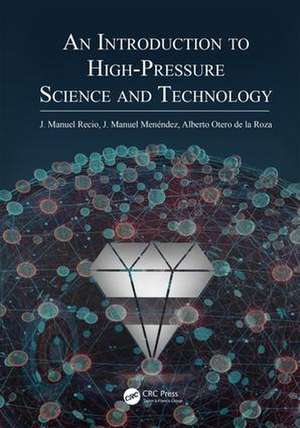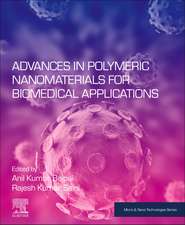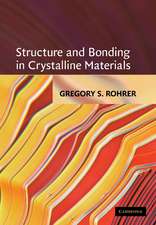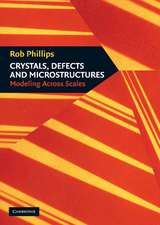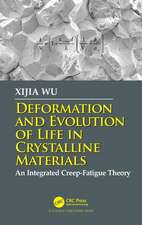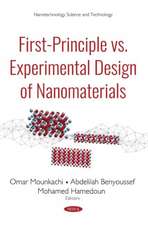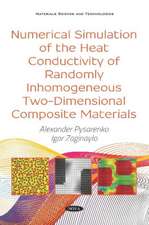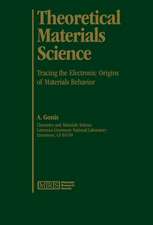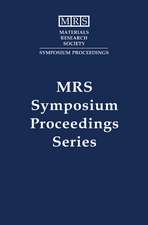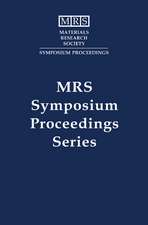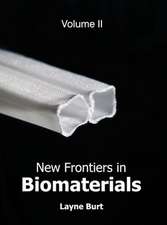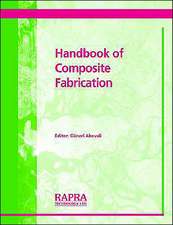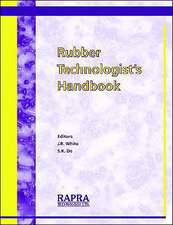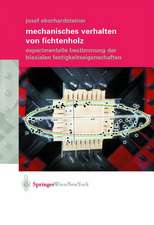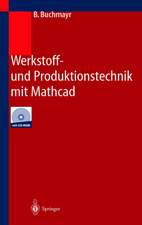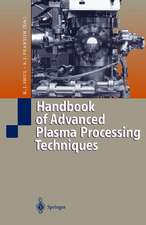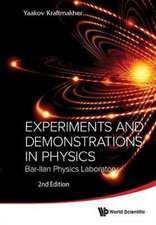An Introduction to High-Pressure Science and Technology
Editat de Jose Manuel Recio, Jose Manuel Menendez, Alberto Otero de la Rozaen Limba Engleză Hardback – 22 oct 2015
Thirty-nine specialists in high-pressure research guide you through the process of learning why pressure is considered a powerful scientific and technological tool, how pressure can be introduced into the laboratory, and which problems can be solved using this thermodynamic variable. The book presents basic thermodynamic equations and state-of-the-art computational tools. It shows how many experimental techniques, when combined with pressure, are powerful sources of information for understanding natural phenomena and reveal clear paths for the design of novel materials. The book also addresses the responses of microorganisms, Earth constituents, and icy planets to pressure.
| Toate formatele și edițiile | Preț | Express |
|---|---|---|
| Paperback (1) | 455.03 lei 6-8 săpt. | |
| CRC Press – 30 iun 2020 | 455.03 lei 6-8 săpt. | |
| Hardback (1) | 691.22 lei 6-8 săpt. | |
| CRC Press – 22 oct 2015 | 691.22 lei 6-8 săpt. |
Preț: 691.22 lei
Preț vechi: 813.19 lei
-15% Nou
Puncte Express: 1037
Preț estimativ în valută:
132.26€ • 138.47$ • 109.44£
132.26€ • 138.47$ • 109.44£
Carte tipărită la comandă
Livrare economică 05-19 aprilie
Preluare comenzi: 021 569.72.76
Specificații
ISBN-13: 9781498736220
ISBN-10: 149873622X
Pagini: 520
Ilustrații: 159 black & white illustrations, 9 black & white tables
Dimensiuni: 178 x 254 x 46 mm
Greutate: 1.04 kg
Ediția:1
Editura: CRC Press
Colecția CRC Press
ISBN-10: 149873622X
Pagini: 520
Ilustrații: 159 black & white illustrations, 9 black & white tables
Dimensiuni: 178 x 254 x 46 mm
Greutate: 1.04 kg
Ediția:1
Editura: CRC Press
Colecția CRC Press
Cuprins
Theory: Thermodynamics of Solids under Pressure. Mechanisms of Pressure-Induced Phase Transitions. Ab Initio High-Pressure Simulations. Structure Prediction at High Pressures. Chemical Bonding under Pressure. Experimental Techniques: High-Pressure Generation and Pressure Scales. Structure Determination. Optical Spectroscopy. Vibrational Spectroscopy. Physical Properties of Fluid Media. Applications: Microbiology under Pressure. Food Science and Technology. Biotechnological Sciences and Industrial Applications. High-Pressure and High-Temperature Conditions as Tools for the Synthesis of Inorganic Materials. Structure of Earth’s Interior. Interiors of Icy Moons from an Astrobiology Perspective.
Notă biografică
J. Manuel Recio leads a research group in Theoretical and Computational Chemistry of Solids under Extreme Conditions at the University of Oviedo. He has been teaching physical chemistry at the undergraduate and post-graduate levels for more than 25 years. He is the author of more than 100 scientific publications. He received a PhD in chemical sciences from the University of Oviedo.
José Manuel Menéndez is in charge of the computational center in the Centre for Neuroregeneration at the University of Edinburgh. His research work has been featured at international conferences and in prestigious research journals. He received a PhD in chemical physics from the Universidad de Valladolid.
Alberto Otero de la Roza is a research officer at the National Institute for Nanotechnology in Edmonton, Canada, where he works on computational approaches to non-covalent interactions. He received a Ph.D in chemistry from the University of Oviedo.
José Manuel Menéndez is in charge of the computational center in the Centre for Neuroregeneration at the University of Edinburgh. His research work has been featured at international conferences and in prestigious research journals. He received a PhD in chemical physics from the Universidad de Valladolid.
Alberto Otero de la Roza is a research officer at the National Institute for Nanotechnology in Edmonton, Canada, where he works on computational approaches to non-covalent interactions. He received a Ph.D in chemistry from the University of Oviedo.
Recenzii
"… an incredibly rich guide for postgraduate students and scientists of any age and experience approaching the high-pressure world. The book is a perfect mix of theory and experimental practice, providing a well-referenced and up-to-date overview of most of the different facets characterizing high-pressure science."
—Roberto Bini, Professor of Chemical-Physics, University of Florence
"This would be an extremely useful book for PhD students starting their work in high-pressure science as well as for more experienced scientists willing to initiate themselves into this area. Both experimental and theoretical approaches are covered with a good balance and a number of important examples allow readers to get a good feeling for current research."
—Professor Alfonso San Miguel, University of Lyon
"An Introduction to High-Pressure Science and Technology by Recio et al. covers all aspects of high-pressure science, from theory to experiment to applications in a wide range of fields, including physics, chemistry, Earth science, and biology. The organization of the book in three parts (theory, experiments, and applications) is particularly well suited to cover such a vast area of science and technology. Each chapter is written by a recognized authority in each subtopic of high-pressure science and presents an up-to-date state of the art in each area. This book is highly recommended as an introduction for MSc and PhD students starting in the field of high-pressure science and as a reference for all those working with high pressure. It is also an ideal textbook for graduate courses and summer schools."
—Dr. Julien Haines, Research Director, CNRS, Institut Charles Gerhardt Montpellier
"This text is written by 39 scientists who are internationally renowned experts on the topics they cover in this book. Many examples and results emanate directly from their own research interests and are ideally suited to explaining basic concepts and methods in high-pressure research. I highly recommend this book to those who want to become familiar with this topic, in particular postgraduate students."
—From the Foreword by Stefan Klotz, Chairman, European High Pressure Research Group (EHPRG), Université Pierre et Marie Curie
—Roberto Bini, Professor of Chemical-Physics, University of Florence
"This would be an extremely useful book for PhD students starting their work in high-pressure science as well as for more experienced scientists willing to initiate themselves into this area. Both experimental and theoretical approaches are covered with a good balance and a number of important examples allow readers to get a good feeling for current research."
—Professor Alfonso San Miguel, University of Lyon
"An Introduction to High-Pressure Science and Technology by Recio et al. covers all aspects of high-pressure science, from theory to experiment to applications in a wide range of fields, including physics, chemistry, Earth science, and biology. The organization of the book in three parts (theory, experiments, and applications) is particularly well suited to cover such a vast area of science and technology. Each chapter is written by a recognized authority in each subtopic of high-pressure science and presents an up-to-date state of the art in each area. This book is highly recommended as an introduction for MSc and PhD students starting in the field of high-pressure science and as a reference for all those working with high pressure. It is also an ideal textbook for graduate courses and summer schools."
—Dr. Julien Haines, Research Director, CNRS, Institut Charles Gerhardt Montpellier
"This text is written by 39 scientists who are internationally renowned experts on the topics they cover in this book. Many examples and results emanate directly from their own research interests and are ideally suited to explaining basic concepts and methods in high-pressure research. I highly recommend this book to those who want to become familiar with this topic, in particular postgraduate students."
—From the Foreword by Stefan Klotz, Chairman, European High Pressure Research Group (EHPRG), Université Pierre et Marie Curie
Descriere
Suitable for newcomers to the field, this book guides readers through the process of learning why pressure is considered a powerful scientific and technological tool, how pressure can be introduced into the laboratory, and which problems can be solved using this thermodynamic variable. The book presents basic thermodynamic equations, state-of-the-art computational tools, and many experimental techniques. It also addresses the responses of microorganisms, Earth constituents, and icy planets to pressure.
